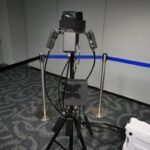
A new review of major acquisition programs managed by the Department of Homeland Security found that three systems are not meeting their planned cost or schedule goals but most program are, according to the Government Accountability Office (GAO). The three programs not meeting their DHS approved acquisition program baseline are the Homeland Advanced Recognition Technology (HART) biometric system effort, the Coast Guard’s Medium-Range Surveillance (MRS) Aircraft and the Science and Technology Directorate’s National Bio and Agro-Defense Facility (NBAF), says the…

 By
By 











